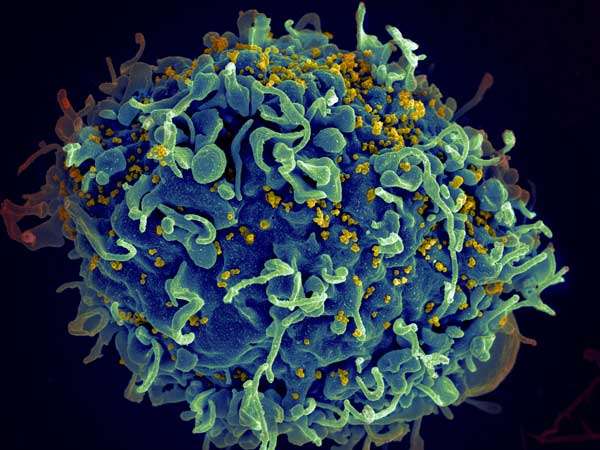New insights into HIV's evolution that can improve pharmaceutical testing techniques

Treatment of HIV/AIDs has evolved greatly since the disease's emergence in 1981. When antiretrovirals were first introduced, almost every patient developed drug resistance within the first year of drug use. Today, however, drug resistance is fairly uncommon and HIV patients can typically maintain healthy lives.
Understanding how this shift occurred could provide insights that improve the pace and accuracy of clinical trials of new drugs. In a study published in the online journal eLife, Stanford scientists report just that.
After analyzing 6,717 patient records, they found that once in a patient, HIV acquired drug resistance in two different patterns that could represent the effectiveness of the treatment administered to the patient. In the early days, the virus overcame drugs by maximizing its genetic diversity. But over time, the virus sacrificed genetic diversity to gain resistance to modern, more broadly effective treatments.
HIV is generally not resistant to drugs when it is transmitted and contracted by people. The resistance more likely evolves inside the host. Like all viruses, it mutates naturally over time, and sometimes it mutates in a way that makes it resistant to drugs. The virus populations within a person treated by modern drug combinations generally fail to acquire these resistant mutations.
"We were interested in what shifted in the evolutionary dynamics between the 1980s, when patients failed all the time, versus 2015 or 2016, when patients do really well on therapy," said lead author Alison Feder, a graduate student in biology at Stanford who conducted the work in the lab of Stanford biology Professor Dmitri Petrov.
By combing through historical HIV records from the Stanford HIV Drug Resistance Database, Feder and her colleagues found that two specific mutation patterns could be used as indicators of treatment viability.
In some cases, the virus becomes drug resistant while retaining genetic diversity within a host. A high rate of mutations in the population gives the virus more opportunities to develop multiple simultaneous drug-resistant mutations that spread throughout the viral population within the patient at the same time, thus maintaining high amounts of diversity. This is called a "soft sweep."
"Hard sweeps," on the other hand, occur when a virus develops only a single successful resistant mutation. When this one mutation spreads throughout the body, the virus becomes genetically homogeneous. In these populations, it's rare that the single mutation is for drug resistance.
"Our guess was that in the early days of HIV treatment when resistance failure was really common, drug resistance evolution must have been driven by soft sweeps," said Feder.
This knowledge will not necessarily improve modern HIV treatments – they perform well already – but the discovery of how viruses evolve in response to different treatments has a surprising payoff for drug development for other diseases: It allows scientists to determine the effectiveness of a drug from how it fails instead of how often it fails.
Normally, testing drugs requires a full clinical trial based on detailed information about the patients. A clinical trial usually measures the effectiveness of a drug by comparing the number of participants who are doing fine to those who have developed resistance after a certain span of time.
Based on the new HIV finding, researchers could potentially focus on the virus population within the patients who have developed resistance. If the treatment failed via hard sweeps, it might indicate the patient simply developed an unlucky mutation and thus the drug has broader promise. If, however, a soft sweep were responsible for the failure, the researcher would know that this treatment could be likely to fail in most patients, and resources should be devoted to other, more promising drugs.
This new approach to drug testing has particular appeal to evaluating new cancer treatments. A difficulty of treating cancer is finding the right combination of drugs for each individual case. Generally, there are not enough people willing to test all possible combinations of drugs through clinical trials, or the small sample size might steer researchers to inaccurate conclusions based on misleading patient responses to drugs.
With next-generation DNA sequencing, it is possible to measure the genetic diversity of tumors by sampling the patient's blood. It could then be possible measure the diversity of tumors in patients failing treatment to estimate drug effectiveness with relatively few participants.
"It's an exciting potential application," Feder said. "We're using data in a way that people haven't looked at it before."
More information: Alison F Feder et al. More effective drugs lead to harder selective sweeps in the evolution of drug resistance in HIV-1, eLife (2016). DOI: 10.7554/eLife.10670

















